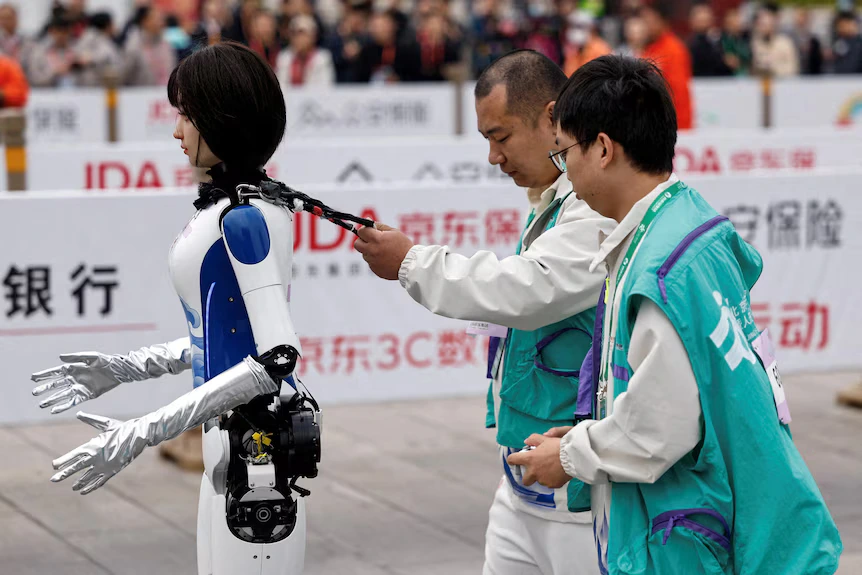Imagine running a half-marathon—and having robots keeping pace alongside you. That’s exactly what happened this weekend in Beijing, where more than 20 humanoid robots joined thousands of human runners for a groundbreaking 21-kilometer race.
The event, part spectacle and part serious tech showcase, marked the first time humanoid robots have officially raced alongside people over such a long distance. The machines came in all shapes and sizes, some barely brushing 120 centimeters tall, while others towered at an impressive 1.8 meters. One manufacturer even debuted a robot with distinctly human-like features, capable of winking and smiling at curious onlookers.
Ahead of the race, companies had been rigorously testing their robots for weeks, fine-tuning everything from navigation to stability. And it showed—at least for some. While a few robots like the winning Tiangong Ultra impressed the crowd with smooth, stable strides, others struggled right from the starting line. One bot dramatically face-planted seconds after the race began, lying prone for a few agonizing minutes before rallying to its feet. Another veered into a railing, toppling its human handler in the process.
Spectators were enthralled by the spectacle. “The robots are running very well, very stable … I feel I’m witnessing the evolution of robots and AI,” said one onlooker, He Sishu.

The winning robot, Tiangong Ultra—developed by the Beijing Innovation Center of Human Robotics—finished with an impressive time of two hours and 40 minutes. For context, the fastest human runner completed the half-marathon in just over an hour. Tiangong’s success, according to chief technology officer Tang Jian, comes down to a smart combination of design and programming. The robot’s long legs and its sophisticated running algorithm, which mimics human movement patterns, were key advantages. Even more impressively, it only needed three battery swaps throughout the entire race.
But not everyone is convinced that robot marathons are a meaningful measure of technological progress. Some experts, like Alan Fern, a professor of AI at Oregon State University, noted that software capable of making humanoid robots run was developed years ago. “Generally, these are interesting demonstrations, but they don’t demonstrate much regarding the utility of useful work or any type of basic intelligence,” Fern said.
Still, the event speaks to China’s growing ambition to lead in cutting-edge industries like robotics. As the country pours investment into innovation hubs and tech development, these public showcases—no matter how imperfect—are a glimpse into the possibilities (and the challenges) of integrating robots into everyday life.
For now, it’s clear: whether sprinting, staggering, or crashing into railings, robots are officially on the move—and the future of marathons might just look a little more mechanical.

